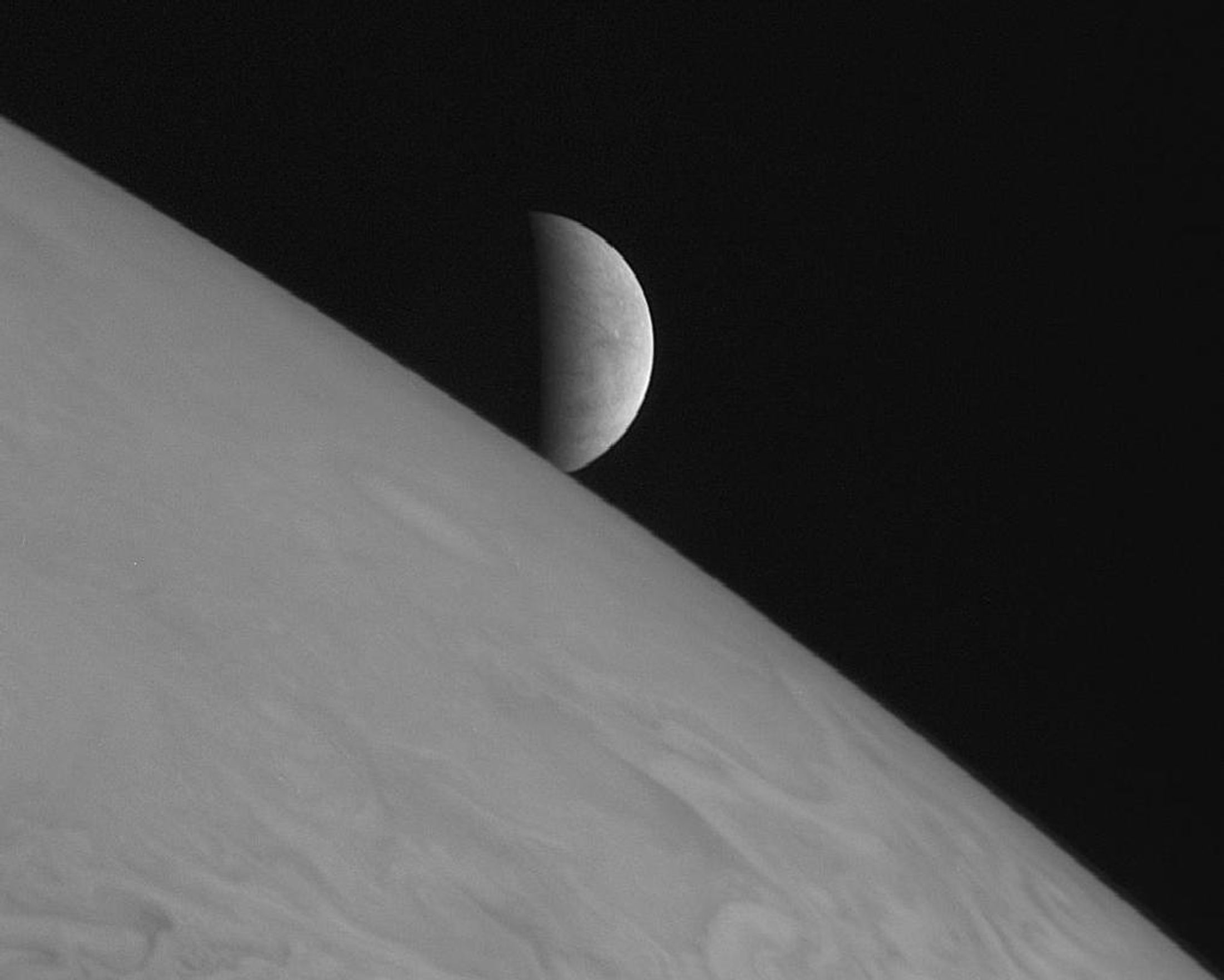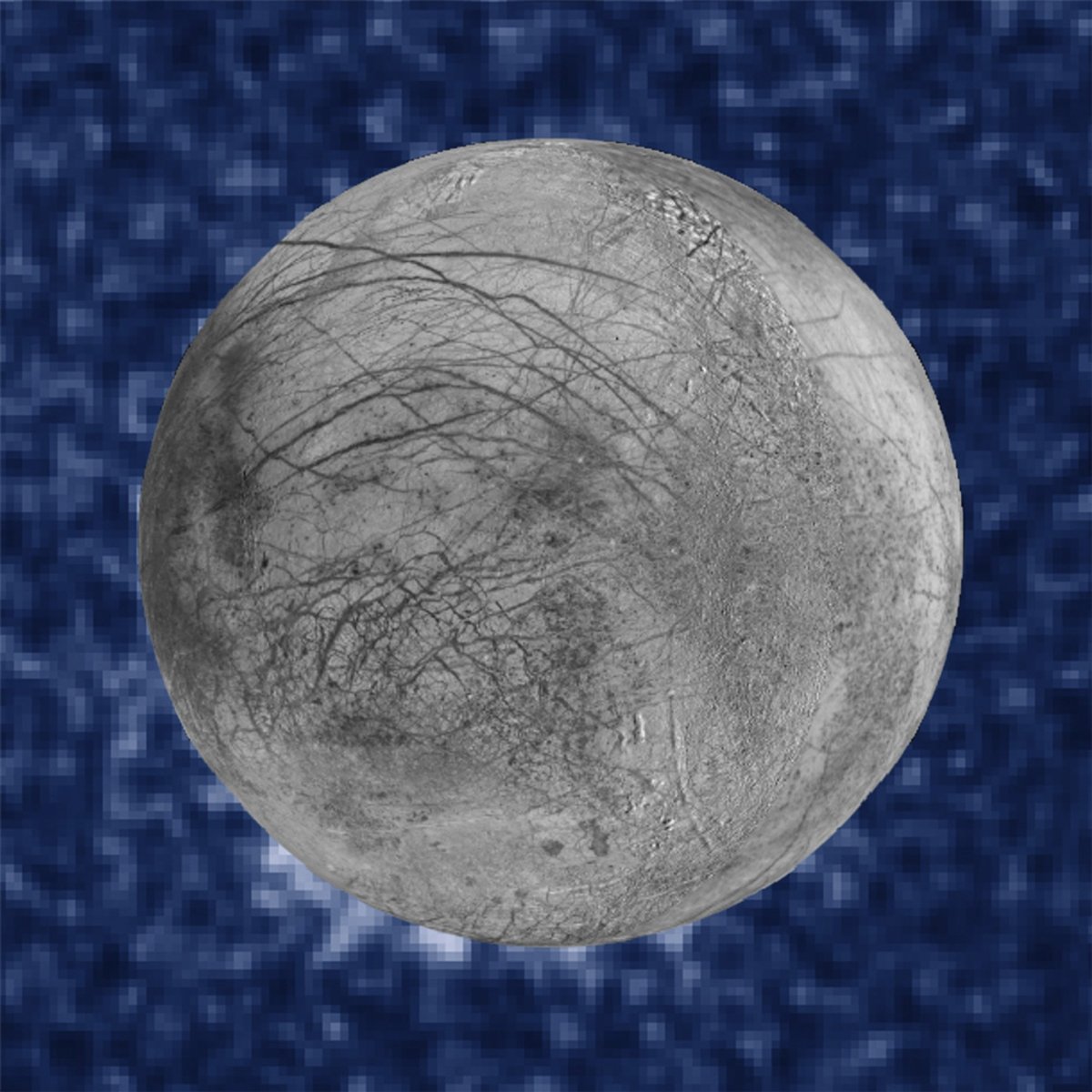
Updated | Earthquakes could be fueling life on Europa, one of Jupiter's moons. Scientists have shown that huge chunks of the moon's ice crust could be sinking others, infusing its underground ocean with chemical food.
The earth's crust is split into many distinct plates, the largest of which we know as continents. Tectonics describes the movement of these huge, deep pieces of rock, as they collide, submerge and fracture. The vast amounts of energy released by this activity causes earthquakes and volcanic eruptions.
Geophysicists from Brown University in Providence, Rhode Island, have shown that tectonic activity is also feasible within Europa's ice shell. They used a computer simulation to map subduction—where one giant slab of ice is forced under another.
The research was published in the Journal of Geophysical Research: Planets on Monday.
"'Europaquakes' would likely be quite common," lead author of the study, Brandon Johnson, told Newsweek. "On earth they are called earthquakes, on the Moon they are called moonquakes, on Mars they are called marsquakes—so on Europa they would be europaquakes,"
Europa's tectonic features have been studied for a number of years. Previous studies have pointed towards the possibility of subduction. The moon's icy surface is relatively smooth, suggesting it is frequently resurfaced by tectonic activity.
Subduction seemed a likely cause because of the ridges that cut through the moon's oceans, the authors explained. Over many thousands of years, the earth's tectonic plates have been pushed further and further apart. Huge undersea mountain systems mark this incredible movement today. Similar submarine ridges suggest the outer shell of Europa is expanding too.
"We have this evidence of extension and spreading, so the question becomes where does that material go?" Johnson said in a press release. "On Earth, the answer is subduction zones. What we show is that under reasonable assumptions for conditions on Europa, subduction could be happening there as well, which is really exciting."

The team created a sophisticated computer model of Europa, based on Earth's tectonic activity. The team's research suggests that, below the very cold surface of the moon, there is a slightly warmer layer of ice. Depending on the concentration of salt in the two crusts, slabs of warmer ice could be forced all the way down to the moon's vast underground ocean. Salt encourages ice to conduct heat, which is why we salt snowy roads in winter.
There are important differences between Europa and Earth, which Johnson believes could be of great importance to future study.
"The way that ice deforms under stress can be quite different than the way rock deforms, so I expect there are some major differences. Understanding the similarities and differences between plate tectonics on Europa and Earth will likely lead to some great insights about plate tectonics as a general planetary process," he told Newsweek.
Tectonics could provide alien food
Destructive as tectonics are on Earth, the movement of plates could be fundamental to life on Europa. Scientists believe that the moon's vast underground sea is potentially filled with organisms. On Earth, subduction can draw magma from below the crust. On Europa, it could draw life-filled water up from the sea with the icy crust infusing the water with chemical food.
"If indeed there's life in that ocean, subduction offers a way to supply the nutrients it would need," Johnson said.
This story has been updated to include additional quotes from Brandon Johnson.
Uncommon Knowledge
Newsweek is committed to challenging conventional wisdom and finding connections in the search for common ground.
Newsweek is committed to challenging conventional wisdom and finding connections in the search for common ground.
About the writer
Katherine Hignett is a reporter based in London. She currently covers current affairs, health and science. Prior to joining Newsweek ... Read more
To read how Newsweek uses AI as a newsroom tool, Click here.








